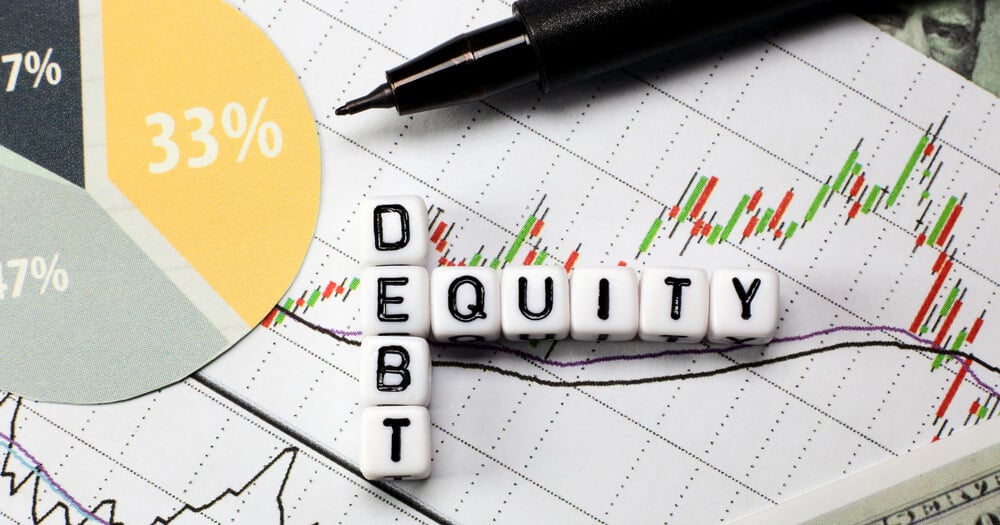Scaling an eCommerce business from $10M to $30M isn’t just about driving more sales. It’s about having the financial muscle to fuel that growth. Whether you’re eyeing a UK market launch, expanding your product line, or finally nailing that Sephora partnership, one thing is clear: you need capital to make it happen.
But here’s where the waters get murky. Do you take on debt and juggle repayments, or do you raise equity and give away a piece of your hard-earned business? Neither option is a walk in the park, and making the wrong move could hammer your cash flow, hurt your valuation, or leave you scrambling to recover.
Let’s break it down so you can make a confident choice that aligns with your eCommerce or CPG business goals and sets you up for long-term success.
Understanding the Financing Landscape for eCommerce and CPG Businesses
At $10M-$30M in revenue, you’re in the messy middle—big enough to have real traction but small enough to feel the growing pains. Scaling an eCommerce or CPG business requires capital, not just for marketing and inventory but also for things like new market expansions, R&D, and team building.
This is what I call the “scaling gap.” You can’t bootstrap your way through this phase without stress-testing your margins or running out of cash. And that’s where financing comes in. The big question is: debt or equity?
Debt Financing: Pros, Cons, and When It’s the Right Move
The Upside: Taking on debt lets you keep ownership of your company. You’re essentially renting someone else’s money to fund your growth. Payments are predictable, and there are even tax advantages for interest paid on loans.
The Downside: Debt is a double-edged sword. If your cash flow hits a bump—say, due to a seasonal dip or an underperforming launch—those monthly repayments can feel like a noose tightening around your neck. And for eCommerce and CPG businesses, the interest rates can be higher because of the perceived risk.
When to Choose Debt: Debt is best for funding short-term initiatives like:
– Seasonal inventory purchases.
– Bridging cash flow gaps during growth spurts.
– Launching a single product or campaign with a clear ROI.
Example: Let’s say you’re preparing for a big summer push, and you need $500K to bulk up inventory. A term loan or a line of credit can help you meet demand, keep ownership intact, and ride the wave of revenue that follows.
Equity Financing: Pros, Cons, and When It Makes Sense
The Upside: Equity financing gives you cash without the immediate pressure of repayments. Plus, with the right investors, you gain more than just money. You get strategic guidance, connections, and expertise that can turbocharge your growth.
The Downside: The cost of equity isn’t interest payments—it’s ownership. Giving away equity means giving up a slice of your future profits and potentially your decision-making control. It’s a long-term trade-off, so choose wisely.
When to Choose Equity: Equity is ideal for:
– Expanding into new markets (e.g., entering the UK or Europe).
– Building your team or infrastructure for long-term growth.
– Taking big strategic bets, like developing a new product line or opening retail channels.
Example: Imagine you’re ready to launch in the UK. You need a localized website, compliance support, inventory, and marketing—all before a single sale comes through. An equity round could provide the $1.5M you need to execute flawlessly, and a strategic investor might even connect you with distributors.
Key Factors to Consider When Making Your Decision
Still not sure which way to go? Here are the big questions to ask:
1. What are Your Growth Goals?
Debt is great for short-term needs, but equity can fuel long-term plays. If your goal is to double revenue in three years, equity might be the better bet.
2. How Stable Is Your Cash Flow?
Can you comfortably handle monthly repayments even during slow seasons? If the answer’s no, equity might offer more breathing room.
3. What’s Your Ownership Goal?
Are you willing to give up a slice of the pie to grow faster? If not, debt might be your move—just make sure your cash flow can handle it.
4. Are You Ready for Market Opportunities?
Timing is everything. If a retailer like Sephora or Nordstrom is knocking on your door, you need the cash to act quickly, whether through debt or equity.
Real-World Examples of Debt vs. Equity in Action
Debt Example:
A beauty brand preparing for a Sephora Canada launch uses a $750K term loan to fund inventory and marketing. They retain ownership, and the predictable repayment schedule allows them to plan cash flow around their seasonal revenue peaks.
Equity Example:
A DTC company raises $2M in equity to expand into the UK. The strategic investors provide not just capital but also introductions to local distributors, helping the company fast-track its international growth.
Financial Modeling: Avoiding Costly Mistakes
Before you decide, model the financial impact of both options. Here’s how:
– Calculate ROI: How much revenue will this investment generate, and how quickly?
– Assess cash flow: Can you handle repayments without strangling your operations?
– Evaluate contribution margins: Will your margins support either option?
Collaborating with a Fractional CFO or financial expert can help you run accurate scenarios and avoid decision paralysis.
Conclusion: The Right Financing for Your Vision
The choice between debt and equity isn’t just a numbers game—it’s about your vision for the future. Debt keeps you in control but comes with short-term pressures. Equity offers breathing room and strategic support but at the cost of ownership. The right answer depends on your growth goals, cash flow, and risk tolerance.
Ready to weigh your options?
If you’re stuck deciding or need help modeling the financial impact, let’s talk. Book a free consultation with a Fractional CFO who specializes in eCommerce and CPG businesses. Together, we’ll create a financing strategy that aligns with your business goals and sets you up for sustainable growth.
Schedule a Free Consultation Now

